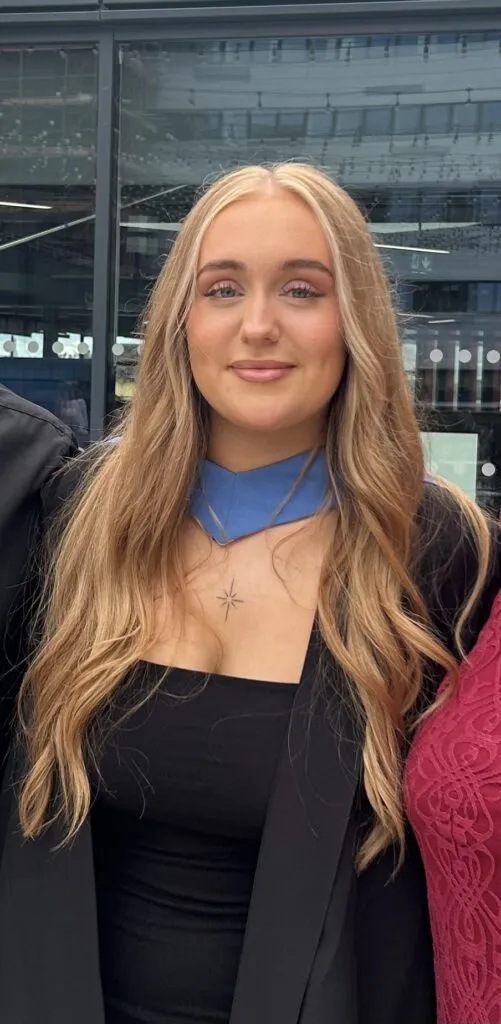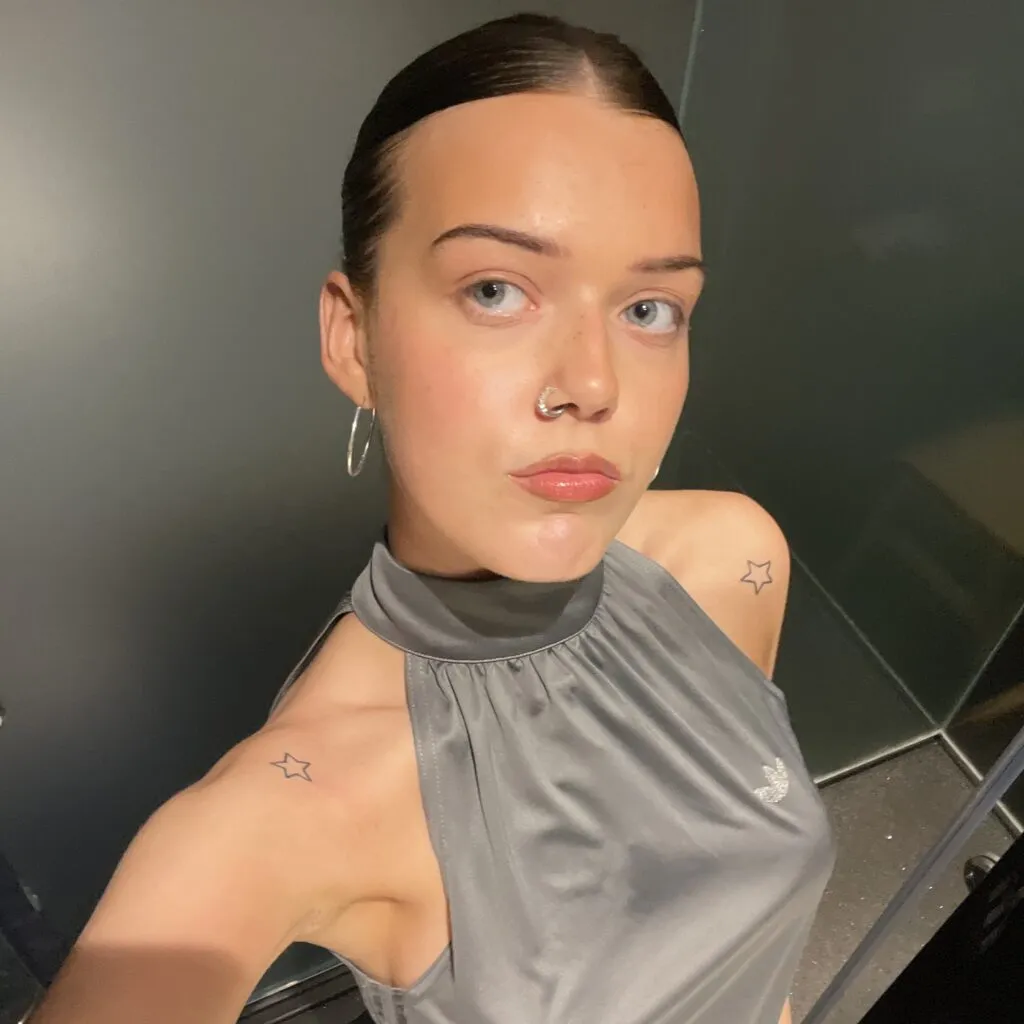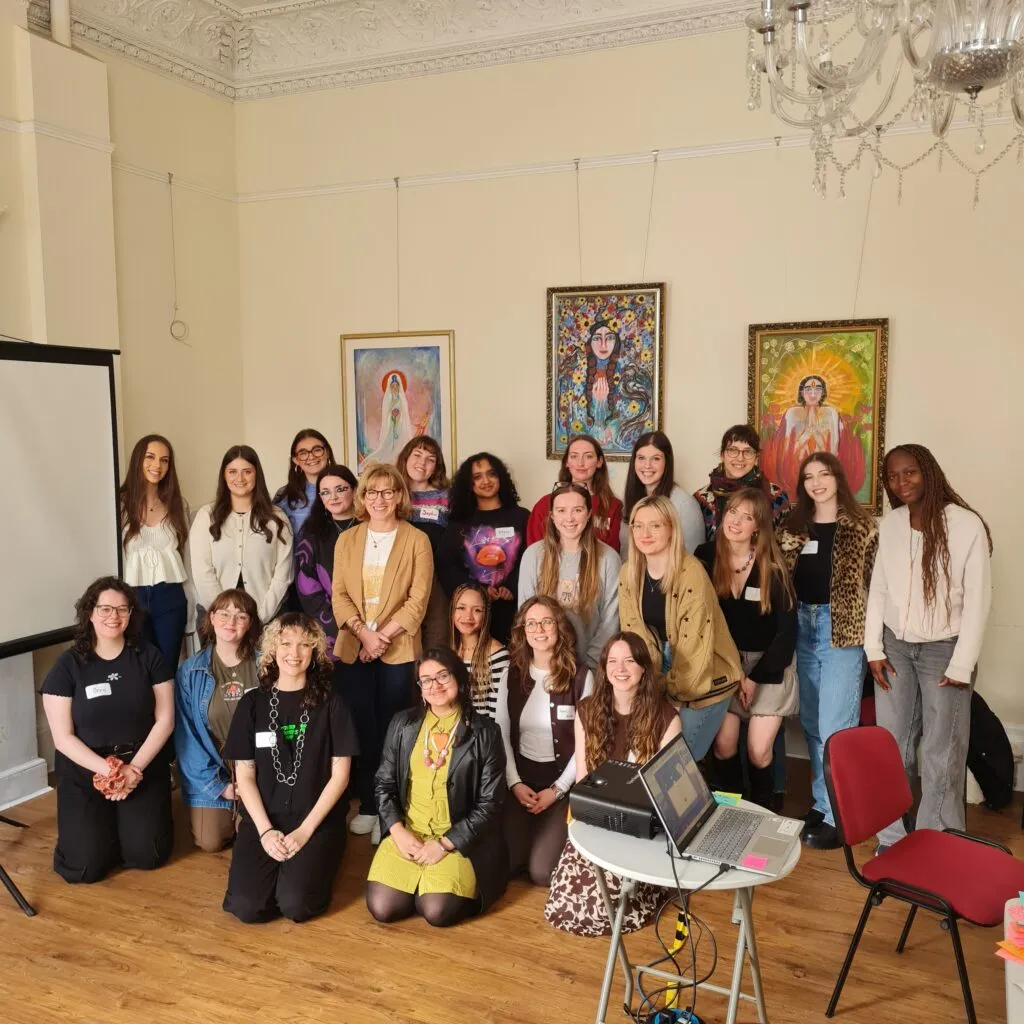Content warning: This article contains themes such as murder, violence against women, online abuse and misogyny.
In this article, Lauren looks at the 2025 Netflix series Adolescence from a feminist perspective, and discusses whether it could be used as teaching tool.
As a community worker, I spend most days listening to young people, talking to them about friendships, navigating social media, relationships and trauma. So, when Netflix’s newest series Adolescence focused on these very topics, I was curious and hopeful that it would be a realistic and helpful series to spark important conversations with young people and their families.
However, when I finished watching the series, I was left feeling conflicted. While the series is effective in highlighting real issues such as online communities, peer pressure, and toxic masculinity, it also fails to remove itself from harmful topics that continue to negatively affect young girls. It fails to explore their stories or avoid using their trauma as a trope.
The much discussed series follows the story of Jamie, a 13-year-old boy arrested for murdering his female classmate, Katie. As the series unfolds, we learn about Jamie’s views towards women and how he has been “influenced” by the manosphere. The manosphere refers to a network of online communities that claim to discuss men’s struggles, but often promote extremely harmful advice and misogyny.
In this article, I explore whether Adolescence should be used as an educational resource or whether the angle of the show risks reinforcing dangerous stereotypes and dismisses female stories.
What the show gets right
In some ways, the series does a fantastic job of portraying the reality many young people face. It’s depiction of how teenage boys are drawn into misogynistic online spaces felt very familiar. The show doesn’t shy away from showing how easily boys can be influenced through podcasts, and social media, and this was portrayed in a realistic not overly dramatised way.
My favourite, and I believe the most realistic, episode was the third, which follows Jamie, now in a secure youth training centre. In this episode, we see a female forensic psychologist, Briony, speaking with Jamie. She asks him about his family, friendships, and relationships to understand how he views the crime he committed.
As their conversation progresses, Jamie becomes more unsettled, clearly desperate to impress Briony. Eventually, he reveals that Katie, the girl he murdered, had nude photos leaked. Jamie believed that because she was upset, she would be “desperate,” and thus couldn’t say no to a date. This moment underscores his misunderstanding of vulnerability and consent.
The episode successfully covers the timeline leading to Katie’s murder while exploring Jamie’s troubled relationship with his father, feelings of inadequacy, confusion around masculinity, the influence of the online manosphere, and his need to dominate women including attempts to intimidate Briony.
The series also offers some, though limited, space for girls to show emotional complexity. These moments could help teachers spark conversations around mental health, online identity, and gender awareness expectations, if such discussions are carefully guided.
Where the show falls short
Initially, I found the online conversation about the show encouraging. It offered a way for parents to engage with their children around topics they may not have previously known how to approach. It even prompted calls to hold platforms like Facebook, X, and Instagram accountable for the content they allow. However, once I discussed the series with young people, I immediately felt a sense of anxiety. Many felt it wasn’t realistic and that the show got a lot wrong they didn’t identify with the characters.
That anxiety deepened when politicians began suggesting the show be used in schools. So what, exactly, feels wrong?
While I appreciate that the show chose to explore the perpetrator and focus on why Jamie killed Katie rather than the murder itself or Katie’s backstory, it feels as though Katie is forgotten. Her death is glossed over to explore Jamie’s complex relationship with women. Once again, young women’s trauma is used to support a male character’s arc, rather than being given space or depth. Katie’s death serves more as a turning point for others than as a story in itself.
Then there’s the problem of representation. For a show supposedly about the diversity of teenage life, Adolescence presents a very narrow view of girlhood. The main female characters are Katie’s best friend, Jade, and Briony, the forensic psychologist. Jade is complex and shows guilt, anger, and sadness but the way she is treated as a young Black women often pushes stereotypes. She’s told to “calm down” and to be “empathetic” towards the very boys who supplied Jamie with the knife used to kill her best friend.
Jade is spoken to and treated differently than her male classmates. While this might be a creative choice to reflect how girls are often expected to be more mature or understanding than boys of the same age, it’s not explored in enough depth. It’s not enough to include “strong female” characters if they’re still subjected to the same harmful stereotypes.
There are also moments when toxic male characters are given redemptive arcs without real accountability, while female characters are punished for their vulnerability. I worry about the messages these portrayals send.
So, can a show like Adolescence be used in schools? Yes, but only if it’s taught critically. Introducing this show into classrooms without proper context is risky. Media is never neutral, and without a framework for discussion, students could internalise harmful messages instead of challenging them.
Teachers and youth workers would need to prepare content warnings, structured discussion guides, including questions around consent, identity, and media literacy. There would need to be space to unpack the heavy topics the show only briefly touches on. Most importantly, they’d need to centre student voices especially those whose experiences are not represented on screen.
In my practice as a community worker, I’ve seen how powerful it can be when young people are given space to reflect on media they consume. But this process has to be intentional. Not every show that looks “real” is rooted in care.
Using Adolesence in Schools—If We’re Willing to Do the Work
Adolescence is not without merit. It gets some things right. It has sparked important conversations and resonates with the world young people are growing up in. But resonance is not the same as responsibility.
If we want to use media in classrooms, especially to teach about gender-based violence, we need stories that go beyond trauma. We need content that reflects the diverse, joyful, painful, and complex realities of all young people, not just a curated few.
So, should Adolescence be used in schools? Only if we’re ready to teach it critically, challenge its flaws, and supplement it with the stories it leaves out. Our young women and girls deserve nothing less.






